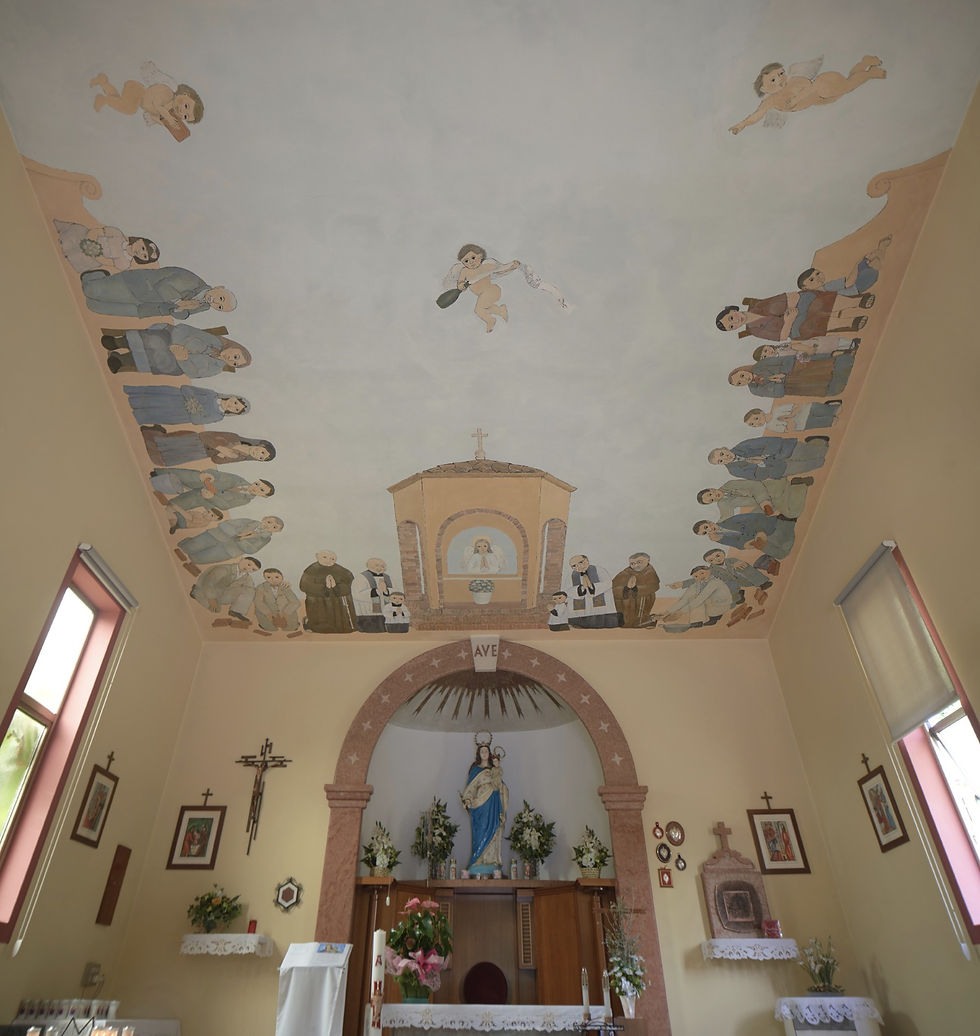
BIOGRAPHY
Maria Pia Filippetto was born in Tombolo in the province of Padua on 25 September 1954.
Between Maria Pia and painting is a story of love and humanity.
The passion for painting blossomed in early childhood and has never stopped since.
As an adolescent, Maria Pia was struck by the works exhibited in the corridors of her college for deaf and dumb girls in the beautiful Valmarana , an eighteenth-century Venetian villa located in Noventa Padovana in the province of Padua. She also remembers with great emotion the book on Picasso that a dear friend gave her when she was 16.
Her works tell the story of a woman who, overcoming obstacles and undertaking many journeys, transformed her desire to paint into a lifestyle. We discover her paintings as if we were browsing the photo album of her life.
In her paintings we find the legacy of the past and of the places that welcomed and inspired her. The Academy of Fine Arts, teaching painting courses for the deaf in Padua in the 70s, the transfer of her experiences to Dakar, Senegal, in the early 80s; hence the palette of warm African tones and the shapes, square and rounded at the same time, that release an enveloping energy in continuous movement. Finally, her beloved France, her home for over 20 years, constantly present with typical elements of the landscapes of Brittany, Vendée and the moors of Ile-de-France.
Tra le sue opere più iconiche, la reinterpretazione de "Il Quarto Stato" di Giuseppe Pellizza da Volpedo.
"From the Fourth Estate to Today's Carnation"
1989, Oil on canvas, 400x200 cm


Round, dreamy, in love, alone, free, maternal… her paintings are an ode to Woman in all her forms and moments, especially the search for love.
Her profession has led her to hold the role of Professor of Art in the Civic Museums of Paris such as Carnavalet, Art Moderne, Bourdelle and several others, for over 15 years.
Since 1976 his works have been exhibited in group and solo exhibitions in Italy, Switzerland, Senegal, France and St. Petersburg ( see list of past exhibitions ) .
Among his works is a cycle of frescoes in the chapel of SS Maria Ausiliatrice in Tombolo (PD), his hometown, in 2003.






REVIEWS
In each canvas she places her characters in a frame: the sky, the earth and the verticality that unites them. In the center, leaning against this verticality, woman, man, children. But the bodies are not locked there. The slight curvature of the back is based on the line that rises a few centimeters from the edge of the canvas, always the same margin. The head often exceeds the upper line, closer to the sky. And the feet take their support on the ground, under the lower line. This gives them a special strength. There is melancholy in these works, a sadness that sometimes creeps into the colors, but also a fierce will, which puts its affirmation in the reds. Life is therefore there, in these volumes, these circles where calves, thighs, buttocks, breasts and women's faces are drawn. But Maria Pia Filippetto's women have red cheeks and blue shadows. They are not lascivious: they are powerful and seem to wait. Sometimes the lines stretch to express a childhood, an adolescence. Sometimes a door opens, sometimes the boats are ready to leave, sometimes the trees make a distant call, which overflows the sky.
Cit. Marc Verhaverbeke - Writer